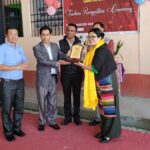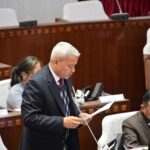Summit Report, Gangtok 26 Mar:
Chief Minister PS Tamang today highlighted that Sikkim has made “remarkable strides” in development since 2019, achieving an 85% increase in GDP in the past six years, reaching Rs 52,555 crore, and a 64% rise in per capita income to Rs 7,07,181.
He pointed out further that budgetary expenditure has more than doubled, and capital investment surged by 269%, reflecting the commitment of the government to strategic growth, financial management, and effective resource utilization.
He highlighted this while presenting the General Budget 2025-26 on the second day of the ongoing second session (Part-III) [Budget Session 2025-26] of the Eleventh Assembly of Sikkim Legislative Assembly today.
“Recognized as the 4th Best State in Poverty Alleviation, with only 2.6% of the population below the poverty line, Sikkim has also excelled in sustainable development, as seen in the latest NITI Aayog assessment. Sikkim has made notable progress in reducing inequalities, ensuring clean water and sanitation, environmental sustainability, and industrial growth, boasting the highest manufacturing sector value addition in the country at 35.7%,” the CM said.
To sustain and accelerate this progress, the government has established the Institute for Transforming Sikkim [ITS], a dedicated policy think tank that will provide data-driven recommendations for governance, planning and economic growth.
He added that ITS will strengthen collaboration with NITI Aayog, oversee policy reforms, and guide Sikkim’s development toward Viksit Bharat 2047. The institute will be headed by the Chief Minister as Chairperson, supported by a Vice Chairperson and seven members, with administrative assistance provided by the Planning & Development Department.
“The ITS will focus on identifying key growth sectors, ensuring effective planning, monitoring, development and implementation of Centrally Sponsored, Externally Aided, and state-earmarked schemes, as well as accelerating progress toward the Sustainable Development Goals [SDGs] by 2030,” he informed.
He added that it will enhance evidence-based decision making, ensure optimal resource utilization and establish Constituency Development Committees [CDCs] in all Assembly Constituencies for grassroots planning and development. ITS will also act as a knowledge hub, training youth and professionals in policymaking, planning, and implementation, he said.
“With this institution in place, Sikkim is poised to become a model for sustainable development, economic resilience, and innovation, ensuring inclusive and transformative growth for years to come,” he remarked.






